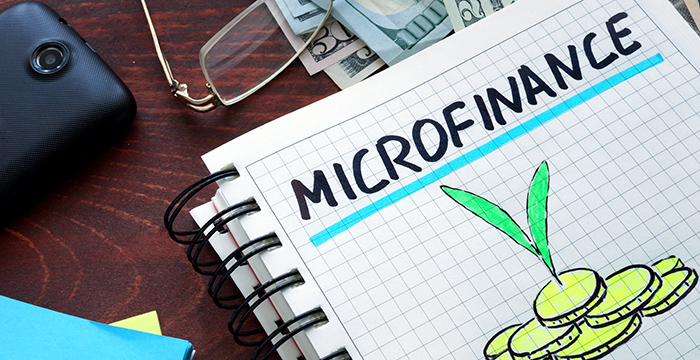I’m standing in line to get a loan to buy a new phone, and I’m thinking, when did all this start? How long have human beings been standing in the lines to get the money?
It all started when In 1983, Nobel Peace Prize awardee, Professor Muhammad Yunus, founded the Grameen Bank. With a dream in his heart to give humans their basic right to obtain loans, he pioneered the concept of microcredit which provided small loans to the poorest people in the rural areas of Bangladesh. Grameen Bank’s success has inspired other microfinance institutions around the world.
It is where the history of microcredit starts. From microcredit, the term has evolved into microfinance and now, financial inclusion. Microfinance institutions (MFI) today continues to develop new services to reach out to the poor and the unbanked.
Even after the years of development, many microfinance institutions consider unbanked and poor as high-risk customers, despite its high social returns. From microfinance to financial inclusion
Some institutions are not even interested in investing in modern finance technology directed to the poorest people on their belief that it would not be profitable and the market is limited.
Looking closely at the timeline of microfinancing development you can see how from several borrowers in the 1970s, microfinance agencies have grown their outreach twice by the end of the 1990s.
Microfinance in the 1990s until the early 21st century witnessed its global expansion. Since then, many microfinance institutions (MFI) began to operate in different parts of the world, particularly the developing nations.
The possibility of financial viability has revolutionized microfinancing. The success of its business model suggests that a large percentage of the unbanked and poor people can be granted access to more financial institutions.
As a result of global expansion, a number of MFI’s established offices in India, South America, Europe, and the Mediterranean, reaching more and more unbanked.
Getting closer to the 21st century, In 1997, the first microcredit summit was held in Washington. Eight years later, the United Nations declared 2005 as the “International Year of Microfinance”
Challenges faced by MFIs
While standing in the line, I’m thinking about how the success of microfinance has been impressive over the last two decades. However, there are still several problems that these institutions face.
One of the hurdles in the expansion of microfinance is the lack of financial infrastructure. It includes the inability of many MFIs in leveraging funds and the lack of network.
As for most non-government organizations (NGO), low operating efficiency and limited resources are what is holding them back in expanding their services to a broader reach, and limiting the time spent in lines and for waiting.
Modern Microfinance and the mobile money market
Microfinance has been a widely accepted tool to reduce poverty. However, the high operational costs such as the need to build branch offices and its labor-intensive nature still add up to its interest rate. Therefore, to deliver affordable credit services to borrowers, mobile banking may be the best solution for MFI’s to reduce these costs.
Over the years, mobile technology has advanced steadily. Combined with the increasing affordability of mobile devices, mobile money seems to be the most promising model today. In addition, subscriptions to mobile services have also been rising each year.
How AssetStream innovates the future for microfinance through blockchain
The latest buzz about the combination of blockchain and microfinancing industry made me think about connecting the power of blockchain technology with the current microfinance model. Projects like AssetStream aim to develop an innovative microfinancing ecosystem that will be able to bring financially excluded people to the new global economy through digital ledger technology (DLT).
The AssetStream platform provides a seamless transaction between the borrower and the lender by leveraging on the blockchain. Distinct from the other microfinance models, the platform features a badge system which makes it easier for the lenders to see the borrowers’ credit rating based on the latter’s credit behavior.
With blockchain as the underlying technology for AssetStream’s platform, its smart contract works real-time and assures that all transactions will be transparent between the lender and borrower.
Ready to experience fast and secure microloan with your fingertips?
It will only get better, once all of us adopt the new technologies. No more thinking about where you would end up if you weren’t in the line, or what would you have if you’d never got declined for a loan. Microfinancing is transforming with AssetStream, join and experience blockchain-based services.
Disclaimer: This is a guest article. The views, opinions and positions expressed within it are those of the author alone and do not represent those of Cryptopolitan. The accuracy, completeness and validity of any statements made within this article are not guaranteed. We accept no liability for any errors, omissions or representations. The copyright of this content belongs to the author and any liability with regards to infringement of intellectual property rights remains with them.





